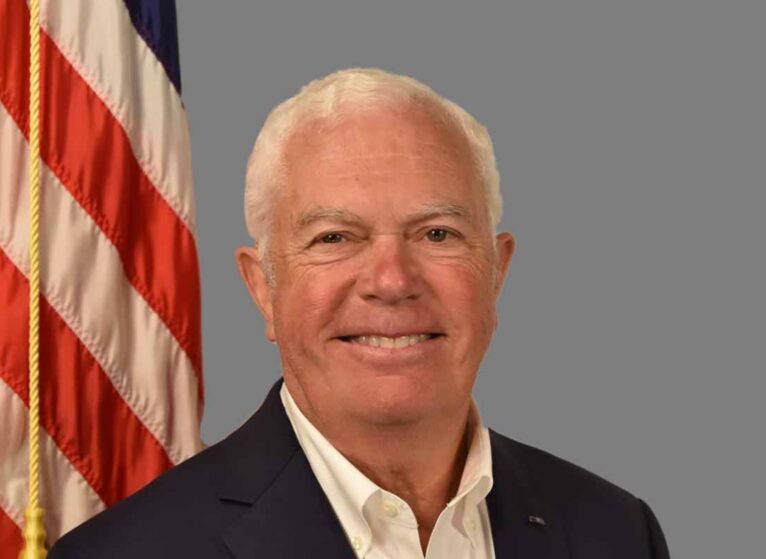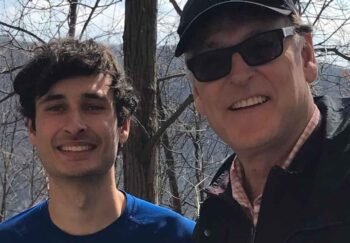Tom Coyle's health had always been good. A long-time triathlete and a career in law enforcement meant that Tom was no stranger to keeping fit. But a heart attack struck him unexpectedly while he was asleep one night. It stopped his heart (a cardiac arrest).
Luckily, the quick actions of his wife, who started CPR, and the use of a special heart pump by the expert UVA Health heart care team, got Tom through his life-threatening heart attack, cardiac arrest, and recovery.
“I dodged a huge bullet, so to speak,” says Tom about that night. Raza N. Yunus, MD, the doctor who led the UVA Health Prince William team that saved Tom’s life, agrees. “The vast majority of people who have an out-of-hospital cardiac arrest, they don't even make it to the hospital. A lot of them pass away at home or en route to the hospital,” he notes.
Tom’s Heart-Stopping Night
Tom went to bed feeling normal. However, around 1 a.m., Tom’s wife noticed that his breathing was labored. She tried waking him, but he wasn’t responding, and he didn’t have a pulse. "My wife heard me breathing, in an agonal kind of way, and as a light sleeper, immediately realized that was not normal. She rolled me over, saw that my lips were blue and my eyes were doing stuff they generally don't do, and immediately started CPR.”
How Can You Avoid a Heart Attack?
Being aware of your lifestyle and making changes if needed are key to preventing heart attacks. Some things you can do include:
- Eating a healthy, balanced diet to prevent atherosclerosis (buildup of plaque in blood vessels, which blocks them)
- Avoiding tobacco
- Exercising regularly
- Managing stress
See more about heart disease prevention.
Emergency services showed up within minutes to help. They worked hard to stabilize him, using several shocks and more CPR. Once he was stable, they rushed Tom to UVA Health Prince William Medical Center.
“The most remarkable thing, I think, about Tom's story is that he did not regain a pulse, despite the very valiant efforts of the EMS staff that came to his home, for almost 45 minutes. It took a very, very long time for them to restart his heart,” recounts Yunus. “By the time he got to our emergency room, he was critically ill. He had already been placed on a breathing machine to help him breathe. The critical question was, how do we support him?" recalls Yunus.
The Pump vs. The Widowmaker
Yunus and his team were ready to act. They decided to put in a special heart pump to take pressure off of his heart. "I put in an implantable heart pump, which provided blood flow to the body, allowing his heart to rest," Yunus explains. This special heart pump takes blood from the left lower chamber in your heart and sends it out to the rest of the body (a left ventricular assist device, also called LVAD). It’s the smallest heart pump of its kind.
Learn CPR
“The biggest thing that saved Tom's life was his wife’s immediate recognition and action. Learning CPR is a valuable skill that can save lives,” says Yunus.
This quickly improved Tom's condition. Yunus was then able to take a look at Tom’s heart and blood vessels using a test called a coronary angiogram. It showed a complete blockage in a blood vessel that feeds blood to Tom’s heart: the left anterior descending artery. A blockage in that artery can lead to a heart attack known as a "widow-maker.” “And that was the reason that he had had his event,” adds Yunus.
Yunus and his team then put in a special tube, called a stent, in Tom’s left anterior descending artery to open it up. That restored blood flow to Tom's heart. “A stent is essentially a metal scaffolding that goes inside the artery to restore the blood flow and get the heart back to receiving blood,” explains Yunus.
Watch Tom and Yunus recount Tom's emergency and the lifesaving care he received at UVA Health Prince William Medical Center:
On the Way to Recovery
Over the next few days, Tom's condition really improved. The heart pump was removed, and he began to breathe on his own. "He showed us that he was improving very quickly," Yunus notes. Within a week, Tom was on his way to rehabilitation, where he continued to recover quickly.
“From the moment I woke up, I was surrounded by a team that cared deeply about my recovery,” says Tom. “They pushed me to get up and move, which made a huge difference in my rehabilitation. The folks at the hospital, at UVA Health, could not have been more committed and devoted to my care.”
Tom's recovery continued under Yunus's watchful eye. A dietician helped him manage a strict diet with low sodium and portion control. His recovery plan included cardiac rehab and swimming. These both played vital roles in his recovery.
Lifesavers: Literally
Wondering If You're Headed for a Heart Attack?
A UVA Health heart specialist can answer your questions about heart health.
Tom's survival highlights the advanced training and expert care available at UVA Health Prince William.
Yunus credits his team’s training and dedication to saving Tom’s life: “I may have been the one to find the blockage and put the heart pump in, but I couldn't have done it without the help of all the colleagues, my partners, all the techs, the people that work in the cath lab that helped me to do my job, and everyone in the ICU staff and the rest of the hospital. It was really a team effort,” he notes. “And of course, a very, very big shout out to the EMS staff that they didn't give up... I think they knew this guy had a shot,” he smiles.
Tom’s gratitude for the expert care and support from the UVA Health team is immense. "The care I received was exceptional. Dr. Yunus and his team saved my life, and I am forever grateful," says Tom. In fact, Tom gave Yunus a funny gift: a pack of Life Savers candy, acknowledging the life-saving care he received. "I said, ‘Here, this is for you, lifesaver,’" chuckles Tom.


